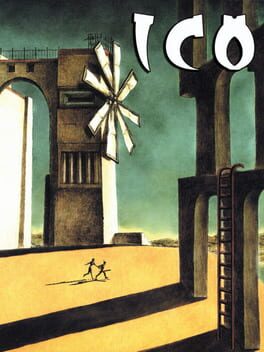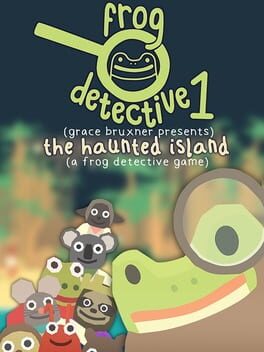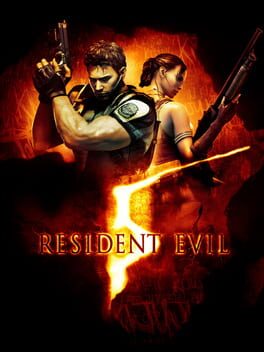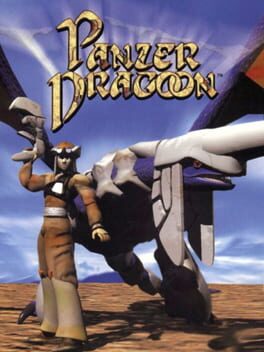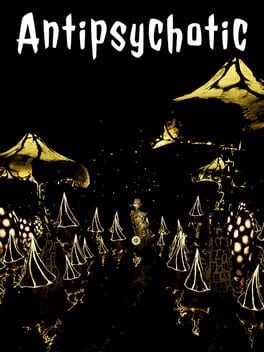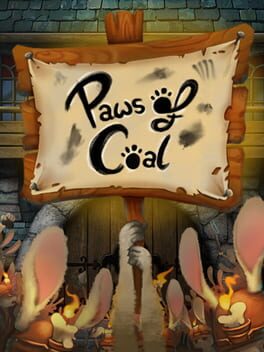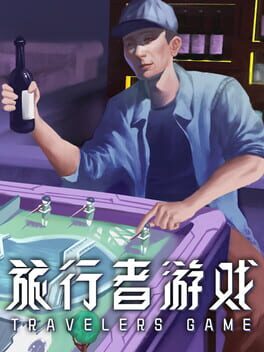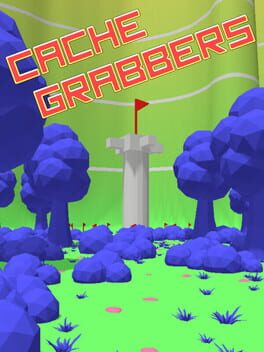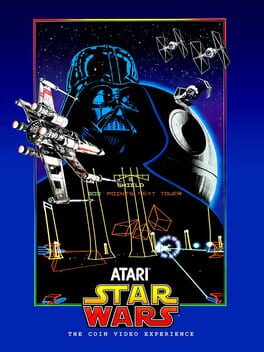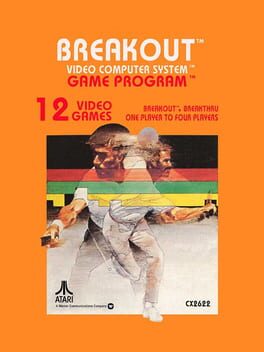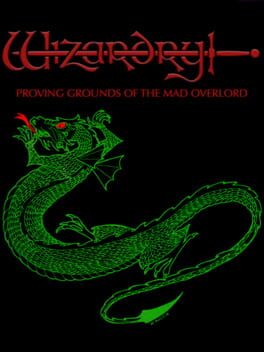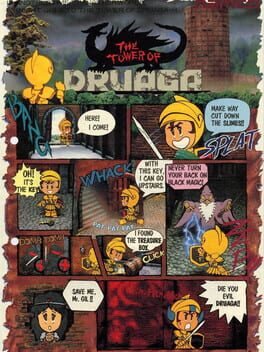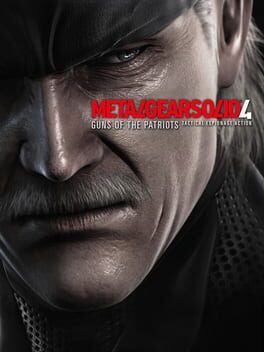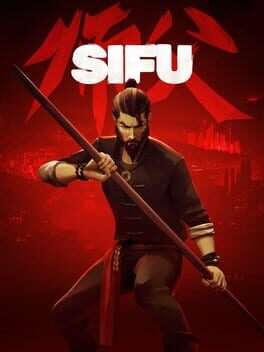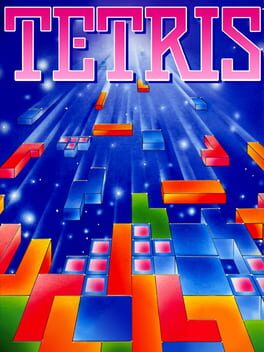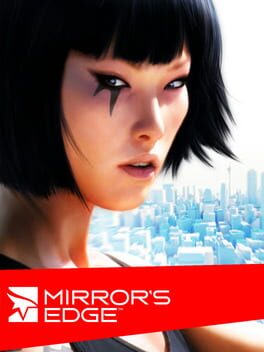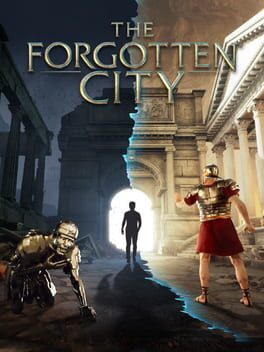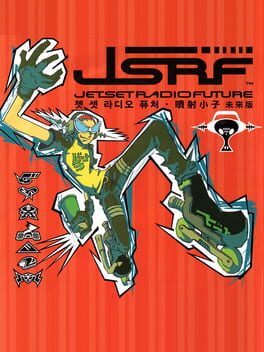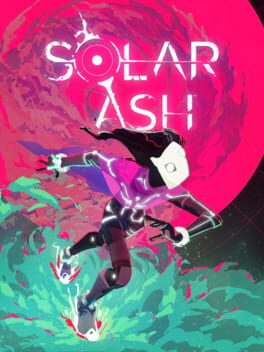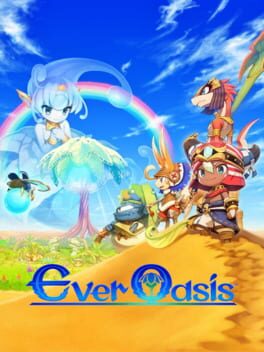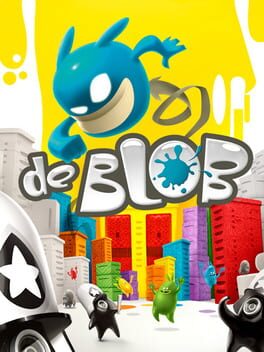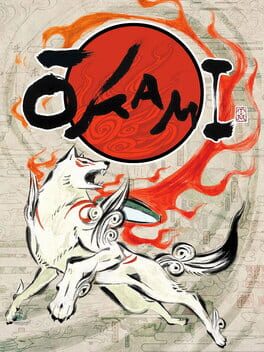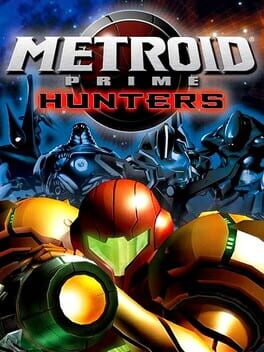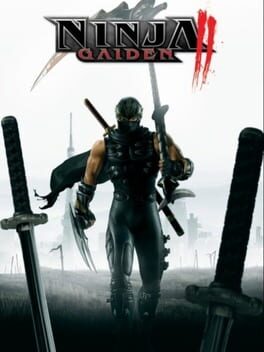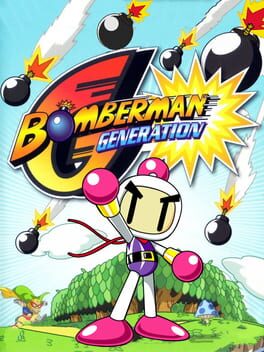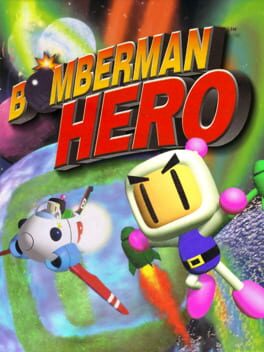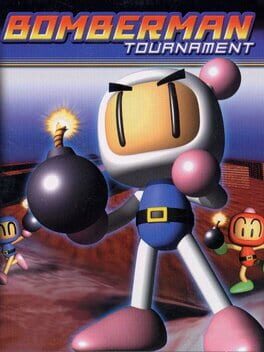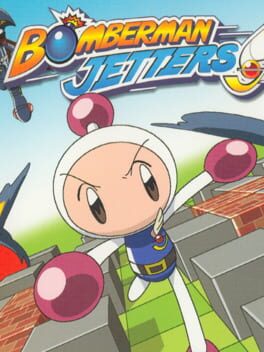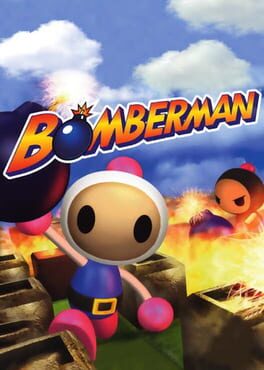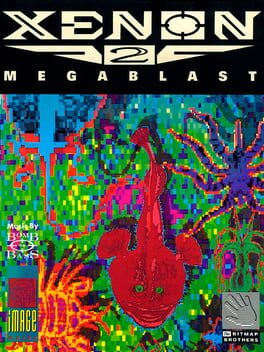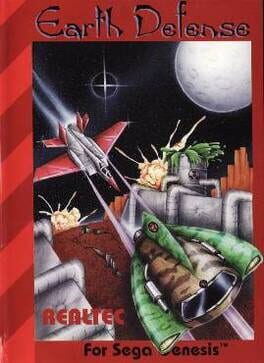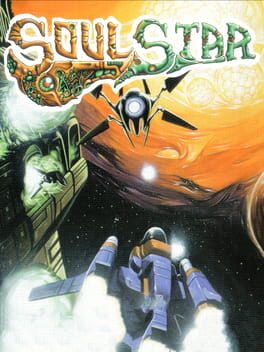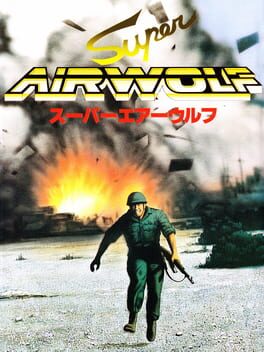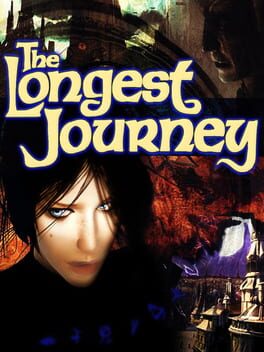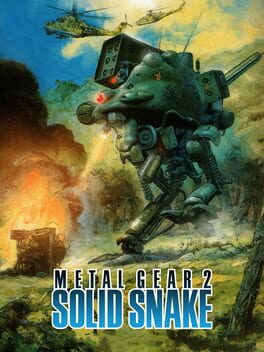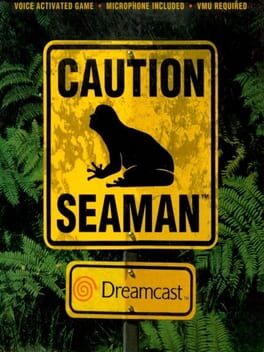Undercover
BACKER
174 reviews liked by Undercover
Pikmin
2001
The secret behind Pikmin’s success was not that it somehow outclassed classic real-time strategy franchises, but rather that it was never competing with them to begin with. According to Shigeru Miyamoto, he came up with the idea for Pikmin one day when he observed a group of ants carrying leaves together into their nest. Miyamoto then imagined a game focused on cooperation rather than competition; he asked, “Why can’t everyone just move together in the same direction, carrying things as a team?” Nintendo EAD’s design philosophy went along with this line of reasoning, melding design mechanics from different genres to create an entirely new yet familiar experience. As a result, instead of competing against other players in Pikmin akin to classic RTS games, Pikmin forces players to explore and compete with the very environment itself by introducing puzzle-exploration and survival mechanics. It made sense in the end; after all, real-time strategy is concerned with minimizing time spent to get a competitive edge over opponents, and what better way to translate this than to force players to master their understanding over the terrain itself, managing and optimizing the one resource which governs them all?
Perhaps Nintendo’s greatest challenge was figuring out how to translate a genre considered by many to be niche and technical to an intuitive yet layered game, and even more so, translating classic actions from a mouse and keyboard allowing for such complexity to a suite of simplified controls using a gamepad. Coming from the other side as someone who played Starcraft as a kid and didn’t get into Pikmin until recently however, I’m surprised at how well EAD’s tackled this endeavor. Classic RTS games focus upon base-building and resource gathering through the micromanagement of units. Pikmin’s take upon this is to introduce a dichotomy between the player character Captain Olimar, who is incapable of doing anything by himself but can issue commands to the units only he can create by plucking out of the soil, and the Pikmin, who are essentially brainless but represent the units that must do everything. The player as Olimar must be present to figure out exactly how to best traverse and exploit the environment around him (replacing the base-building with management/prioritization puzzles) while the Pikmin provide bodies to construct, move, and attack the world around them. However, the Pikmin’s AI is fairly limited and as a result, Pikmin will sit around helplessly once they finish their actions and often get distracted by nearby objects while moving around, which is where the micromanagement kicks in. Therefore, the player has to decide how to best build up their supply of Pikmin to allocate tasks to surmount bottlenecks while exploring and opening the world, all while working against the limited thirty-day timer throughout the game’s five areas.
A part of me expected to really struggle with the gamepad while playing Pikmin, but the available actions on offer allow for a surprising degree of control despite the simplification. For instance, consider Olimar’s whistle; as a substitution for dragging and clicking to select units on PC, the whistle on the GameCube lets Olimar quickly rally groups of clustered units. Holding down B for longer allows the player to increase the size of the whistle’s AOE, which allows the player to better control and target how many Pikmin to rally in any cluster (hence, the analog of clicking and dragging to select boxes of units on mouse and keyboard). The Swarm command is another interesting translation. The obvious use is to allow Olimar to quickly move nearby Pikmin by directing them with the C-stick versus needing to aim and throw them by positioning and rotating Olimar himself. However, because it can be used to shift the position of Pikmin with respect to Olimar, it can also be used to swap the Pikmin on-deck for throwing (since Olimar will always throw the Pikmin closest to him) without needing to dismiss and re-rally separated Pikmin colors, and most importantly, it allows you to directly control the group of Pikmin following Olimar while moving Olimar himself. This second application allows the player to kite the Pikmin around telegraphed enemy attacks, and properly funnel them so the Pikmin aren’t getting as easily stuck behind walls or falling off ledges/bridges into hazards. That said, noticeable control limitations do exist. Olimar cannot pivot to move the reticle without changing his position with respect to the Pikmin around him, which can make aiming in place annoying if the Pikmin types you need to throw aren’t close enough to be moved next to Olimar with Swarm. Additionally, there is no way for Olimar to simultaneously and directly control multiple separated groups of Pikmin, which does make allocating tasks a bit slower. However, given that the tasks themselves usually don’t necessitate more than one Pikmin type at a time, this limitation is understandable, especially since the sequels would tackle this challenge with more expansive controls and multiple playable characters on the field.
Pikmin’s base model as a result is a fantastic translation of an abstract design philosophy, but I can’t help but wonder if the original could have been pushed further. Don’t misunderstand me: I absolutely take pride in mastering a game by learning all about its inner workings and pushing its mechanics to the limits simply by following a few intuitive genre principles. As such, I wish that the game was a bit harder in order to really force me to squeeze every bit of time from the game’s solid premise. For example, combat is often optional in Pikmin given how many full-grown Bulborbs are found sleeping, but given that most enemies don’t respawn within the next day after killing them and I can bring their carcasses back to base to more than replenish my Pikmin supply, combat is almost always in my favor, especially since certain enemies will spawn more mobs if they aren’t defeated. If circumstances existed where it would be unfavorable to engage (such as losing a significant number of Pikmin every time, or having so little time left that engaging would waste time), then I feel that this would add an additional layer of decision-making of deciding when to sneak past sleeping Bulborbs rather than just wiping out as many foes as I could as soon as possible. In a similar sense, I felt that certain design elements such as the Candypop Buds for switching Pikmin colors were a bit underutilized; outside of one environmental puzzle, I never had to use the Candypop Buds, mainly because I had so many remaining Pikmin and time to never justify their usage. I’ll concede here that Pikmin’s one-day Challenge Mode does at least provide a score attack sandbox where I’m forced to take my Pikmin stock and remaining time into higher consideration, but it’s missing the connectivity of the main story mode where my earlier actions would greatly affect how I planned later days in a run, particularly in making judgement calls on which days to spend at each site and which days I dedicate towards building up my Pikmin numbers versus hauling in ship parts. Regardless, I found myself completing the main game with all parts in just twenty days on my first run with minimal resets, and I’d love to try a harder difficulty mode with a stricter time limit and tougher Pikmin margins to really force me to better conserve my working force and dedicate more time to restocking my supply.
Gripes aside, I’m glad that my friends finally convinced me to try out Pikmin, not just to better appreciate RTS games as a whole but to also gain an appreciation of how different genre mechanics can work in tandem to intuitively convey concepts without spelling everything out to the player. It’s classic Nintendo at their core, and while I had my reservations coming in as a fan of older RTS franchises, they’ve managed to convince me once again that the best hook is not simply offering something that’s visibly better, but rather offering something that’s visibly different. I still think that there’s improvement to be had, but given how much I’ve enjoyed the first game, I can’t wait to see what they have to offer from iterating upon their memorable beginnings.
Perhaps Nintendo’s greatest challenge was figuring out how to translate a genre considered by many to be niche and technical to an intuitive yet layered game, and even more so, translating classic actions from a mouse and keyboard allowing for such complexity to a suite of simplified controls using a gamepad. Coming from the other side as someone who played Starcraft as a kid and didn’t get into Pikmin until recently however, I’m surprised at how well EAD’s tackled this endeavor. Classic RTS games focus upon base-building and resource gathering through the micromanagement of units. Pikmin’s take upon this is to introduce a dichotomy between the player character Captain Olimar, who is incapable of doing anything by himself but can issue commands to the units only he can create by plucking out of the soil, and the Pikmin, who are essentially brainless but represent the units that must do everything. The player as Olimar must be present to figure out exactly how to best traverse and exploit the environment around him (replacing the base-building with management/prioritization puzzles) while the Pikmin provide bodies to construct, move, and attack the world around them. However, the Pikmin’s AI is fairly limited and as a result, Pikmin will sit around helplessly once they finish their actions and often get distracted by nearby objects while moving around, which is where the micromanagement kicks in. Therefore, the player has to decide how to best build up their supply of Pikmin to allocate tasks to surmount bottlenecks while exploring and opening the world, all while working against the limited thirty-day timer throughout the game’s five areas.
A part of me expected to really struggle with the gamepad while playing Pikmin, but the available actions on offer allow for a surprising degree of control despite the simplification. For instance, consider Olimar’s whistle; as a substitution for dragging and clicking to select units on PC, the whistle on the GameCube lets Olimar quickly rally groups of clustered units. Holding down B for longer allows the player to increase the size of the whistle’s AOE, which allows the player to better control and target how many Pikmin to rally in any cluster (hence, the analog of clicking and dragging to select boxes of units on mouse and keyboard). The Swarm command is another interesting translation. The obvious use is to allow Olimar to quickly move nearby Pikmin by directing them with the C-stick versus needing to aim and throw them by positioning and rotating Olimar himself. However, because it can be used to shift the position of Pikmin with respect to Olimar, it can also be used to swap the Pikmin on-deck for throwing (since Olimar will always throw the Pikmin closest to him) without needing to dismiss and re-rally separated Pikmin colors, and most importantly, it allows you to directly control the group of Pikmin following Olimar while moving Olimar himself. This second application allows the player to kite the Pikmin around telegraphed enemy attacks, and properly funnel them so the Pikmin aren’t getting as easily stuck behind walls or falling off ledges/bridges into hazards. That said, noticeable control limitations do exist. Olimar cannot pivot to move the reticle without changing his position with respect to the Pikmin around him, which can make aiming in place annoying if the Pikmin types you need to throw aren’t close enough to be moved next to Olimar with Swarm. Additionally, there is no way for Olimar to simultaneously and directly control multiple separated groups of Pikmin, which does make allocating tasks a bit slower. However, given that the tasks themselves usually don’t necessitate more than one Pikmin type at a time, this limitation is understandable, especially since the sequels would tackle this challenge with more expansive controls and multiple playable characters on the field.
Pikmin’s base model as a result is a fantastic translation of an abstract design philosophy, but I can’t help but wonder if the original could have been pushed further. Don’t misunderstand me: I absolutely take pride in mastering a game by learning all about its inner workings and pushing its mechanics to the limits simply by following a few intuitive genre principles. As such, I wish that the game was a bit harder in order to really force me to squeeze every bit of time from the game’s solid premise. For example, combat is often optional in Pikmin given how many full-grown Bulborbs are found sleeping, but given that most enemies don’t respawn within the next day after killing them and I can bring their carcasses back to base to more than replenish my Pikmin supply, combat is almost always in my favor, especially since certain enemies will spawn more mobs if they aren’t defeated. If circumstances existed where it would be unfavorable to engage (such as losing a significant number of Pikmin every time, or having so little time left that engaging would waste time), then I feel that this would add an additional layer of decision-making of deciding when to sneak past sleeping Bulborbs rather than just wiping out as many foes as I could as soon as possible. In a similar sense, I felt that certain design elements such as the Candypop Buds for switching Pikmin colors were a bit underutilized; outside of one environmental puzzle, I never had to use the Candypop Buds, mainly because I had so many remaining Pikmin and time to never justify their usage. I’ll concede here that Pikmin’s one-day Challenge Mode does at least provide a score attack sandbox where I’m forced to take my Pikmin stock and remaining time into higher consideration, but it’s missing the connectivity of the main story mode where my earlier actions would greatly affect how I planned later days in a run, particularly in making judgement calls on which days to spend at each site and which days I dedicate towards building up my Pikmin numbers versus hauling in ship parts. Regardless, I found myself completing the main game with all parts in just twenty days on my first run with minimal resets, and I’d love to try a harder difficulty mode with a stricter time limit and tougher Pikmin margins to really force me to better conserve my working force and dedicate more time to restocking my supply.
Gripes aside, I’m glad that my friends finally convinced me to try out Pikmin, not just to better appreciate RTS games as a whole but to also gain an appreciation of how different genre mechanics can work in tandem to intuitively convey concepts without spelling everything out to the player. It’s classic Nintendo at their core, and while I had my reservations coming in as a fan of older RTS franchises, they’ve managed to convince me once again that the best hook is not simply offering something that’s visibly better, but rather offering something that’s visibly different. I still think that there’s improvement to be had, but given how much I’ve enjoyed the first game, I can’t wait to see what they have to offer from iterating upon their memorable beginnings.
God Hand
2006
"Character action" has never done it for me. I feel the floaty combos and distant cameras really dampen the impact of combat. I'm so glad that we live in the timeline where instead of representing the future of the Resident Evil series, Devil May Cry became its own franchise. Resident Evil 4 was a game that Capcom attempted to make several times, before begging Mikami to come back to the director's seat, and even he scrapped a couple of false starts before he settled on the game he ought to be making. The change in camera was the big thing that players talked about, but it was the shift in focus and tone that really made Resi 4 so beloved by its biggest fans. Mikami had gained skill, establishing multiple complementary mechanics and tying that to a campaign, but he was also more confident in his own sense of humour and whimsy. Resi 4 was a game with a real sense of personality, but it was compromised by the pressures of the surrounding franchise, the publisher and the fanbase. For his next game, he'd disregard all these aspects and make it entirely for himself.
When I first played God Hand, it took about five seconds before I knew I loved it. It's very much built on the back of Resi 4, but makes no apologies for its eccentricities. It takes the weight and impact of Resident Evil 4's shotgun and puts that behind each punch. Resi 4 utilised the sensibilities of modern games just enough to adopt a mostly useless camera manipulation system to the right analogue stick, but God Hand foregoes those conventions entirely, tethering it to your critical dodge system. God Hand doesn't care about any other game. It's fully confident in what it's doing.
God Hand's vibe is a very divisive thing, and not something you can choose to opt out of, but a truly cultured mind will undoubtedly side with it. Its sense of humour comes from a very specific place. It's a deep affection for Fist of the North Star and low-budget 70s kung fu films, but there's so much fondness for late-80s and early-90s action games, too. It loves the ridiculous, digitised voice clips from Altered Beast and Final Fight. The greatest joy is when you encounter an absurd, one-off, late-game disco miniboss, and he hits you with the same audio clips as the standard grunts from Level 1. This is a game full of explosive barrels and giant fruit. Shinji Mikami started production on Resident Evil 4 trying to fulfil the obligation to make his scariest game ever, and by the end, he got so bored with that direction that he created a giant stone robot Salazar that chased you through brick walls. God Hand was the logical next step for him.
There's a focus to God Hand's ambitions that implies Clover really knew what they had with it. A few ridiculous bosses and minigames notwithstanding, the levels are typically fairly boxy and nondescript. All the attention is on the distribution of enemies and items. It's spectacularly un-fancy. Flat ground and big brick walls that disappear when the camera gets too close to them. It doesn't care. The fighting feels great, and we're having a great time with all these stupid baddies. Fuck everything else.
Your moveset is fully customisable. Between levels, you're given the opportunity to buy new moves, and apply them to your controls, either as specials tethered to a specific button combination, or even as part of the standard combo you get while mashing the square button. It offers players real versatility as they figure out their preferred playstyles, and what works for them, while trying something less intuitive can open you up to new approaches. There are quick kicks and punches that overwhelm opponents, heavy-damage moves that take longer to pull off, guard breaks, and long-range attacks that can help with crowd control. There are certain moves and dodges that are highly exploitable, and risk breaking the game's balance. Clover are aware of this though, and whenever they found a strategy that made the game boring, they made sure to penalise you for using it by boosting the difficulty massively whenever you try it.
That's the big feature. The difficulty. God Hand starts out really hard, and when the game registers that you've dodged too many attacks or landed too many successive hits, it gets harder. This was a secret system in Resi 4, but in God Hand, it's part of your on-screen HUD, always letting you know when you've raised or lowered a difficulty level. Enemies hit harder, health pick-ups drop less frequently, and attacks become harder to land. The game's constantly drawing you to the edge of your abilities, and if you die, you have to try the entire section again from the start. It never feels too dispiriting, though. You retain all cash you've picked up after you died, and you feel encouraged by a drop in difficulty. If you do well enough on your next attempt, it won't take long before the difficulty gets back to where it was. There's also some fun surprises for those who get good enough to maintain a Level 3 or Level Die streak for long enough, with some special enemy spawns and stuff. You feel rewarded for getting good, but never patronised or pandered to. Your reward is a game that felt as thrilling as it did when you first tried it.
It's the little eccentricities in God Hand's design that I really admire. Pick up a barrel and Gene will instantly shift his direction to the nearest enemy, eliminating any extraneous aiming bullshit, and pushing your attention towards the opportunity for some cheap long-distance damage. If an item spawns, it remains there until you pick it up, giving you the opportunity to save it for when you really need it, even if the backtracking route becomes a little ridiculous. Since the camera is so stubbornly committed to viewing Gene's back, they've implemented a radar system to keep track of surrounding enemies, and it makes little sense in the context of the scenario, but the game doesn't care about that stuff. It's another thing that makes the fights against gorillas and rock stars more fun, so run with it. Between each section of the game, you're given the opportunity to save, or warp to a kind of mid-game hub world, with a shop, training area and casino, which you can use to unlock better moves and upgrades when you need them most. You can gain money by taking the honest route and chipping away at its toughest challenges, or take the less honourable route with slot machines and gambling on poison chihuahua races. It's blunt, utilitarian, and it's entirely complementary to the way God Hand feels to play.
It's the consistency in tone and intention that completes the package. God Hand knows what it is, and how it feels, and it never betrays that. It doesn't obsess over lore or characters, but it really has fun in introducing new baddies and scenarios to put you in. And I really like its taste. I like that all the big bosses meet up at a secret hell table to exchange barbs between levels. I like the fight on an enormous Venetian gondola. I like the dumb, weird, repetitive soundtrack. The developers are world-class talents, and they just wanted to make a dumb, stupid, fun game.
I probably ought to give the soundtrack a little more credit. This is from Masafumi Takada, out on loan from Grasshopper Manufacture before he became a real gun for hire, working on Vanquish, Kid Icarus: Uprising, Danganronpa and Smash Bros Ultimate. He's great at elaborate, high-energy compositions, but his work on God Hand is some of his dumbest stuff. It's great. The constant Miami 5-0 surf rock, the warbling Elvis boss fight music, and the Flight of the Bumblebee guitar for the fight against a giant fly. He's having the time of his life on this one, fully liberated from the pressures to convey a consistent tone or atmosphere. It's stunning work, and he makes the correct call every time he has to write a new piece of BGM for God Hand.
Shinij Mikami is a bit of an enigma, and his work on Resident Evil has unfortunately typecast him as a horror director, but he's never expressed a real affinity for the genre. He was put into that position under an obligation to Ghouls 'n Ghosts' Tokuro Fujiwara, and the game he ended up making was full of corny heroes and giant snakes. The subject matter was a shock to audiences in the mid-nineties, but in reality, it wasn't that far removed from his work on SNES Aladdin. By my estimation, God Hand's the closest we've come to seeing the real Mikami through his work. He's made Resident Evil 4, and he wants to leave that behind him, but EA and ZeniMax kept dragging him back to his biggest hit.
God Hand feels like the only point in history God Hand could have happened, and it's pretty wild that it did in the first place. I mean, it makes sense that once you hand Capcom the Resi 4 Gold Master disc, they'll let you do whatever you want, but they were so rattled by the result that they fired all of their key talent and started making calls to Canada to produce Dead Rising 2. Confidence in Japanese development was at an all-time low after 2006, and the PS3 and Xbox 360 resulted in some of the most embarrassing entries in many legacy franchises. The PlayStation was born out of a SNES project, and that ethos was what drove the first decade of Sony Computer Entertainment. Afterwards, a new game proposal would not be greenlit without referencing the design of the latest Grand Theft Auto. The Konami, Namco, Square and Capcom that we have today don't reflect who they were in the nineties and early 2000s. To me, God Hand feels like the final page of that chapter. But, man, what a fucking statement to close out on.
When I first played God Hand, it took about five seconds before I knew I loved it. It's very much built on the back of Resi 4, but makes no apologies for its eccentricities. It takes the weight and impact of Resident Evil 4's shotgun and puts that behind each punch. Resi 4 utilised the sensibilities of modern games just enough to adopt a mostly useless camera manipulation system to the right analogue stick, but God Hand foregoes those conventions entirely, tethering it to your critical dodge system. God Hand doesn't care about any other game. It's fully confident in what it's doing.
God Hand's vibe is a very divisive thing, and not something you can choose to opt out of, but a truly cultured mind will undoubtedly side with it. Its sense of humour comes from a very specific place. It's a deep affection for Fist of the North Star and low-budget 70s kung fu films, but there's so much fondness for late-80s and early-90s action games, too. It loves the ridiculous, digitised voice clips from Altered Beast and Final Fight. The greatest joy is when you encounter an absurd, one-off, late-game disco miniboss, and he hits you with the same audio clips as the standard grunts from Level 1. This is a game full of explosive barrels and giant fruit. Shinji Mikami started production on Resident Evil 4 trying to fulfil the obligation to make his scariest game ever, and by the end, he got so bored with that direction that he created a giant stone robot Salazar that chased you through brick walls. God Hand was the logical next step for him.
There's a focus to God Hand's ambitions that implies Clover really knew what they had with it. A few ridiculous bosses and minigames notwithstanding, the levels are typically fairly boxy and nondescript. All the attention is on the distribution of enemies and items. It's spectacularly un-fancy. Flat ground and big brick walls that disappear when the camera gets too close to them. It doesn't care. The fighting feels great, and we're having a great time with all these stupid baddies. Fuck everything else.
Your moveset is fully customisable. Between levels, you're given the opportunity to buy new moves, and apply them to your controls, either as specials tethered to a specific button combination, or even as part of the standard combo you get while mashing the square button. It offers players real versatility as they figure out their preferred playstyles, and what works for them, while trying something less intuitive can open you up to new approaches. There are quick kicks and punches that overwhelm opponents, heavy-damage moves that take longer to pull off, guard breaks, and long-range attacks that can help with crowd control. There are certain moves and dodges that are highly exploitable, and risk breaking the game's balance. Clover are aware of this though, and whenever they found a strategy that made the game boring, they made sure to penalise you for using it by boosting the difficulty massively whenever you try it.
That's the big feature. The difficulty. God Hand starts out really hard, and when the game registers that you've dodged too many attacks or landed too many successive hits, it gets harder. This was a secret system in Resi 4, but in God Hand, it's part of your on-screen HUD, always letting you know when you've raised or lowered a difficulty level. Enemies hit harder, health pick-ups drop less frequently, and attacks become harder to land. The game's constantly drawing you to the edge of your abilities, and if you die, you have to try the entire section again from the start. It never feels too dispiriting, though. You retain all cash you've picked up after you died, and you feel encouraged by a drop in difficulty. If you do well enough on your next attempt, it won't take long before the difficulty gets back to where it was. There's also some fun surprises for those who get good enough to maintain a Level 3 or Level Die streak for long enough, with some special enemy spawns and stuff. You feel rewarded for getting good, but never patronised or pandered to. Your reward is a game that felt as thrilling as it did when you first tried it.
It's the little eccentricities in God Hand's design that I really admire. Pick up a barrel and Gene will instantly shift his direction to the nearest enemy, eliminating any extraneous aiming bullshit, and pushing your attention towards the opportunity for some cheap long-distance damage. If an item spawns, it remains there until you pick it up, giving you the opportunity to save it for when you really need it, even if the backtracking route becomes a little ridiculous. Since the camera is so stubbornly committed to viewing Gene's back, they've implemented a radar system to keep track of surrounding enemies, and it makes little sense in the context of the scenario, but the game doesn't care about that stuff. It's another thing that makes the fights against gorillas and rock stars more fun, so run with it. Between each section of the game, you're given the opportunity to save, or warp to a kind of mid-game hub world, with a shop, training area and casino, which you can use to unlock better moves and upgrades when you need them most. You can gain money by taking the honest route and chipping away at its toughest challenges, or take the less honourable route with slot machines and gambling on poison chihuahua races. It's blunt, utilitarian, and it's entirely complementary to the way God Hand feels to play.
It's the consistency in tone and intention that completes the package. God Hand knows what it is, and how it feels, and it never betrays that. It doesn't obsess over lore or characters, but it really has fun in introducing new baddies and scenarios to put you in. And I really like its taste. I like that all the big bosses meet up at a secret hell table to exchange barbs between levels. I like the fight on an enormous Venetian gondola. I like the dumb, weird, repetitive soundtrack. The developers are world-class talents, and they just wanted to make a dumb, stupid, fun game.
I probably ought to give the soundtrack a little more credit. This is from Masafumi Takada, out on loan from Grasshopper Manufacture before he became a real gun for hire, working on Vanquish, Kid Icarus: Uprising, Danganronpa and Smash Bros Ultimate. He's great at elaborate, high-energy compositions, but his work on God Hand is some of his dumbest stuff. It's great. The constant Miami 5-0 surf rock, the warbling Elvis boss fight music, and the Flight of the Bumblebee guitar for the fight against a giant fly. He's having the time of his life on this one, fully liberated from the pressures to convey a consistent tone or atmosphere. It's stunning work, and he makes the correct call every time he has to write a new piece of BGM for God Hand.
Shinij Mikami is a bit of an enigma, and his work on Resident Evil has unfortunately typecast him as a horror director, but he's never expressed a real affinity for the genre. He was put into that position under an obligation to Ghouls 'n Ghosts' Tokuro Fujiwara, and the game he ended up making was full of corny heroes and giant snakes. The subject matter was a shock to audiences in the mid-nineties, but in reality, it wasn't that far removed from his work on SNES Aladdin. By my estimation, God Hand's the closest we've come to seeing the real Mikami through his work. He's made Resident Evil 4, and he wants to leave that behind him, but EA and ZeniMax kept dragging him back to his biggest hit.
God Hand feels like the only point in history God Hand could have happened, and it's pretty wild that it did in the first place. I mean, it makes sense that once you hand Capcom the Resi 4 Gold Master disc, they'll let you do whatever you want, but they were so rattled by the result that they fired all of their key talent and started making calls to Canada to produce Dead Rising 2. Confidence in Japanese development was at an all-time low after 2006, and the PS3 and Xbox 360 resulted in some of the most embarrassing entries in many legacy franchises. The PlayStation was born out of a SNES project, and that ethos was what drove the first decade of Sony Computer Entertainment. Afterwards, a new game proposal would not be greenlit without referencing the design of the latest Grand Theft Auto. The Konami, Namco, Square and Capcom that we have today don't reflect who they were in the nineties and early 2000s. To me, God Hand feels like the final page of that chapter. But, man, what a fucking statement to close out on.
Ico
2012
Ico is the type of game I dread to play, critically acclaimed, landmark classic of the medium, influenced various games and designers I love. I dread playing those because of a fear I have, a fear that's come true : I don't like ICO, in fact, I think I might hate ICO. And now I will have to carry that like a millstone around my neck, "that asshole who doesn't like ICO". Its not even really that external disapproval I dread, its the very reputation that causes me to second guess my own sincerely held opinions. I thought I liked minimalism in game design, and cut-scene light storytelling and relationships explored through mechanics but I guess I don't. There's some kinda dissonance, cognitive or otherwise reading reviews by friends and writers I respect and wondering if there's something wrong with me or if I didnt get it or played it wrong or any other similar foolishness that gets bandied around in Internet discussions. "I wish we could have played the same game" I think, reading my mutuals' reviews of ICO. Not in a dismissive asshole way of accusing them of having a warped perception, but moreso in frustration that I didnt have the experience that has clearly touched them and countless others.
But enough feeling sorry for myself/being insecure, what is my problem with ICO exactly? I don't really know. Genuinely. I wasnt even planning on writing a review originally because all it would come down to as my original unfiltered reaction would be "Playing it made me miserable". Thankfully the upside of minimalism in game design is that its easier to identify which elements didnt work for me because there are few in the game. I think the people who got the most out of ICO developed some kind of emotional connection to Yorda, and thats one aspect which absolutely didn't work for me. As nakedly "gamey" and transparently artificial as Fallout New Vegas' NPCs (and Skyrim and F3 etc) locking the camera to have a dialogue tree, they read to me as infinitely more human than the more realistic Yorda; for a few reasons. Chief among them is that despite some hiccups and bugs the game is known for, you are not asked to manage them as a gameplay mechanic beyond your companions and well, my main interaction with Yorda was holding down R1 to repeatedly yell "ONG VA!" so she'd climb down the fucking ladder. She'd climb down, get halfway through and then decide this was a bad idea and ascend again.
ICO has been to me a game of all these little frustrations piling up. Due to the nature of the puzzles and platforming, failing them was aggravating and solving them first try was merely unremarkable. It makes me question again, what is the value of minimalism genuinely? There was a point at which I had to use a chain to jump across a gap and I couldnt quite make it, I thought "well, maybe theres a way to jump farther" and started pressing buttons randomly until the circle button achieved the result of letting me use momentum to swing accross. Now, if instead a non-diegetic diagram of the face buttons had shown up on the HUD instead what would have been lost? To me, very little. Sure, excessive direction can be annoying and take me out of the game, but pressing buttons randomly did the same, personally. Nor did "figuring it out for myself" feel particularly fulfilling. Thats again what I meant, victories are unremarkable and failures are frustrating. The same can be said for the combat which, honestly I liked at first. I liked how clumsy and childish the stick flailing fighting style was, but ultimately it involved hitting the enemies over and over and over and over again until they stopped spawning. Thankfully you can run away at times and rush to the exit to make the enemies blow up but the game's habit of spawning them when you're far from Yorda or maybe when she's on a different platform meant that I had to rely on her stupid pathfinding to quickly respond (which is just not going to happen, she needs like 3 business days to execute the same thing we've done 5k times already, I guess the language barrier applies to pattern recognition as well somehow) and when it inevitably failed I would have to jump down and mash square until they fucked off.
I can see the argument that this is meant to be disempowering somehow but I don't really buy it. Your strikes knock these fuckers down well enough, they just keep getting back up. Ico isnt strong, he shouldnt be able to smite these wizard of oz monkeys with a single swing, but then why can they do no damage to ICO and get knocked down flat with a couple swings? Either they are weak as hell but keep getting remotely CPRd by the antagonist or they're strong but have really poor balance. In the end, all I could really feel from ICO was being miserable. I finished the game in 5 hours but it felt twice that. All I can think of now is that Im glad its done and I can tick it off the bucket list. I am now dreading playing shadow of the colossus even harder, and I don't think I ever want to play The Last Guardian, it just looks like ICO but even more miserable. I'm sure I've outed myself as an uncultured swine who didnt get the genius of the experience and will lose all my followers but I'm too deflated to care. If there is one positive to this experience is that I kept procrastinating on finishing the game that I got back into reading. I read The Name of the Rose and Rumble Fish, pretty good reads. Im going to read Winesburg Ohio next I think.
But enough feeling sorry for myself/being insecure, what is my problem with ICO exactly? I don't really know. Genuinely. I wasnt even planning on writing a review originally because all it would come down to as my original unfiltered reaction would be "Playing it made me miserable". Thankfully the upside of minimalism in game design is that its easier to identify which elements didnt work for me because there are few in the game. I think the people who got the most out of ICO developed some kind of emotional connection to Yorda, and thats one aspect which absolutely didn't work for me. As nakedly "gamey" and transparently artificial as Fallout New Vegas' NPCs (and Skyrim and F3 etc) locking the camera to have a dialogue tree, they read to me as infinitely more human than the more realistic Yorda; for a few reasons. Chief among them is that despite some hiccups and bugs the game is known for, you are not asked to manage them as a gameplay mechanic beyond your companions and well, my main interaction with Yorda was holding down R1 to repeatedly yell "ONG VA!" so she'd climb down the fucking ladder. She'd climb down, get halfway through and then decide this was a bad idea and ascend again.
ICO has been to me a game of all these little frustrations piling up. Due to the nature of the puzzles and platforming, failing them was aggravating and solving them first try was merely unremarkable. It makes me question again, what is the value of minimalism genuinely? There was a point at which I had to use a chain to jump across a gap and I couldnt quite make it, I thought "well, maybe theres a way to jump farther" and started pressing buttons randomly until the circle button achieved the result of letting me use momentum to swing accross. Now, if instead a non-diegetic diagram of the face buttons had shown up on the HUD instead what would have been lost? To me, very little. Sure, excessive direction can be annoying and take me out of the game, but pressing buttons randomly did the same, personally. Nor did "figuring it out for myself" feel particularly fulfilling. Thats again what I meant, victories are unremarkable and failures are frustrating. The same can be said for the combat which, honestly I liked at first. I liked how clumsy and childish the stick flailing fighting style was, but ultimately it involved hitting the enemies over and over and over and over again until they stopped spawning. Thankfully you can run away at times and rush to the exit to make the enemies blow up but the game's habit of spawning them when you're far from Yorda or maybe when she's on a different platform meant that I had to rely on her stupid pathfinding to quickly respond (which is just not going to happen, she needs like 3 business days to execute the same thing we've done 5k times already, I guess the language barrier applies to pattern recognition as well somehow) and when it inevitably failed I would have to jump down and mash square until they fucked off.
I can see the argument that this is meant to be disempowering somehow but I don't really buy it. Your strikes knock these fuckers down well enough, they just keep getting back up. Ico isnt strong, he shouldnt be able to smite these wizard of oz monkeys with a single swing, but then why can they do no damage to ICO and get knocked down flat with a couple swings? Either they are weak as hell but keep getting remotely CPRd by the antagonist or they're strong but have really poor balance. In the end, all I could really feel from ICO was being miserable. I finished the game in 5 hours but it felt twice that. All I can think of now is that Im glad its done and I can tick it off the bucket list. I am now dreading playing shadow of the colossus even harder, and I don't think I ever want to play The Last Guardian, it just looks like ICO but even more miserable. I'm sure I've outed myself as an uncultured swine who didnt get the genius of the experience and will lose all my followers but I'm too deflated to care. If there is one positive to this experience is that I kept procrastinating on finishing the game that I got back into reading. I read The Name of the Rose and Rumble Fish, pretty good reads. Im going to read Winesburg Ohio next I think.
This review contains spoilers
Armored Core is defined by an industrial coldness, and such inhumanity is central to the dramatic questions of its newest entry. There isn't a single human being to be seen in the entire game, their presence indicated only by voice over and the hulking mechs they inhabit. Rubicon itself is a planet dotted with colossal megastructures and sprawling metropolises with a bevy of institutions and organizations fighting for control of them as well as the hybrid power source and data conduit substance known as Coral that enticed them there. There’s the derelict scientific institute that established the initial research into the substance and caused the cosmic disaster that hangs over the planet, the governing authority that administers over the remaining Coral reserves, the two corporate powers occupying the planet in order to extract wealth from its veins, and the beleaguered locals struggling to liberate their home. (Editors note: there are actually even more factions in this game!) However, regardless of the faction in question, there’s nary a whiff of culture to be seen, beyond corporate logos and military decals. It’s a vision of humanity's future set on a planet of war where all of our efforts as a people have gone solely into creating the most fucked up mechs, the most overwhelming missile barrages, and the most devastating laser volleys possible. It is within this bleakness that From Software asks the player to answer the question of whether humanity can be trusted to evolve past its current form. It makes for the most interesting moral choice in From Soft’s modern catalog, however not all elements of the game support it as well as it could have.
In order to bring themselves into such a position where they can make such a call, players build and customize their mechs from an arsenal of parts and fight for the highest bidder. There are dozens of stats on display affecting your mech's performances, and figuring out how to balance the tradeoffs of each component to build a cohesive machine is half the fun. This customization is one of the more successful thematic aspects of Armored Core VI, being the vessel in which players express themselves and form an identity. Aside from their name (separate from their callsign, Raven), no aspect of the player character is customizable, or even viewable. Raven is, in essence, their mech, and as such, constantly in flux.
The combat that this customization is in service of is balletic and bombastic, with hefty assault charges and nimble boost dodges, and has a engaging learning curve as the player gradually comes accustomed to managing the considerable mental stack regarding the range and ammunition of four different weapons at once, alongside the mech’s own engine and cooldown capacities. As is typical of From Soft games, spikes in difficulty are often just as much knowledge checks as they are tests of skill and dexterity, and those who love tinkering will be ecstatic over the range of options to try out when they encounter a progress barrier. However, the balancing of the game is too lopsided in order to fully facilitate this intended approach; the stagger system, disconnected from the parries of Sekiro that defined it in that game, heavily rewards burst damage, and if you have powerful ammunition on hand when an enemy is staggered, even Armored Core VI’s fiercest enemies will swiftly crumble. For the most part, my first playthrough was based around upgrading and tinkering with parts for a central mech design I created early on, and the design I took into the final battle shredded every threat it faced in NG+ and NG+2 (on patch 1.02). This undermined the structure that New Game+ is meant to facilitate in this game, which is utilizing the repetition of replaying the game’s various missions as an opportunity to try out new mech designs, and unfortunately I found that NG+2 disappointing in the story department as well.
The story in Armored Core VI the first two routes are quite compelling. It has far more dialogue than any of From Soft’s Soulslikes, including Sekiro, which helps to bring personality to the sheer complexity and density of its proper nouns and headier ideas. There are occasional blemishes, of course. Front of mind is Handler Walter’s dramatically inert off-screen ‘death’, which is, confusingly, only vaguely alluded to. Then there’s the matter of Gen IV augmentation, one of a plethora of established experiments in modifying physiology in order to better pilot Armored Core mechs, which leaves it unclear what Raven’s psychological capabilities are in regards to free will, which muddies the messaging around player choice and the will to choose. However, most of the twists and turns land impactfully, and the decisions to be made are hefty enough that either route of the base story shines through as a memorable and meaningful experience. NG+2, titled ‘Alea lacta Est’ has a lot going for it by focusing around the mercenary support group ALLMIND and their hidden agenda of implementing the Human Instrumentality Project from Neon Genesis Evangelion. It may not be original, but it’s a good thematic fit for the game. This is undermined however by the fact that Alea lacta Est replaces the dramatic gravitas found in the finales of prior playthroughs, with what is essentially a joke. Low rank mercenary G5 Igauza’s petty resentment of the player character takes center stage over a hypothetical antagonist that could have more directly and cleanly represented opposition to the player character’s goals. Sure, G5 Igauza as a foil is meant to represent how one could squander the will to choose, but it doesn’t register when Armored Core VI’s depiction of humanity is already so consumed with war and profit. It doesn't help that the game’s final image is a straight up goofy way of expressing its status quo shift, becoming an instance where the game’s commitment to never showing human faces goes a bit too far, and hardly feeling like a worthy reward to the considerable grind required to reach the ending. It adds up to one of those cases where the masterpiece version of a game is so clearly visible in its released form, but it falls short in a few key places, even if it doesn't stop it from being great overall.
In order to bring themselves into such a position where they can make such a call, players build and customize their mechs from an arsenal of parts and fight for the highest bidder. There are dozens of stats on display affecting your mech's performances, and figuring out how to balance the tradeoffs of each component to build a cohesive machine is half the fun. This customization is one of the more successful thematic aspects of Armored Core VI, being the vessel in which players express themselves and form an identity. Aside from their name (separate from their callsign, Raven), no aspect of the player character is customizable, or even viewable. Raven is, in essence, their mech, and as such, constantly in flux.
The combat that this customization is in service of is balletic and bombastic, with hefty assault charges and nimble boost dodges, and has a engaging learning curve as the player gradually comes accustomed to managing the considerable mental stack regarding the range and ammunition of four different weapons at once, alongside the mech’s own engine and cooldown capacities. As is typical of From Soft games, spikes in difficulty are often just as much knowledge checks as they are tests of skill and dexterity, and those who love tinkering will be ecstatic over the range of options to try out when they encounter a progress barrier. However, the balancing of the game is too lopsided in order to fully facilitate this intended approach; the stagger system, disconnected from the parries of Sekiro that defined it in that game, heavily rewards burst damage, and if you have powerful ammunition on hand when an enemy is staggered, even Armored Core VI’s fiercest enemies will swiftly crumble. For the most part, my first playthrough was based around upgrading and tinkering with parts for a central mech design I created early on, and the design I took into the final battle shredded every threat it faced in NG+ and NG+2 (on patch 1.02). This undermined the structure that New Game+ is meant to facilitate in this game, which is utilizing the repetition of replaying the game’s various missions as an opportunity to try out new mech designs, and unfortunately I found that NG+2 disappointing in the story department as well.
The story in Armored Core VI the first two routes are quite compelling. It has far more dialogue than any of From Soft’s Soulslikes, including Sekiro, which helps to bring personality to the sheer complexity and density of its proper nouns and headier ideas. There are occasional blemishes, of course. Front of mind is Handler Walter’s dramatically inert off-screen ‘death’, which is, confusingly, only vaguely alluded to. Then there’s the matter of Gen IV augmentation, one of a plethora of established experiments in modifying physiology in order to better pilot Armored Core mechs, which leaves it unclear what Raven’s psychological capabilities are in regards to free will, which muddies the messaging around player choice and the will to choose. However, most of the twists and turns land impactfully, and the decisions to be made are hefty enough that either route of the base story shines through as a memorable and meaningful experience. NG+2, titled ‘Alea lacta Est’ has a lot going for it by focusing around the mercenary support group ALLMIND and their hidden agenda of implementing the Human Instrumentality Project from Neon Genesis Evangelion. It may not be original, but it’s a good thematic fit for the game. This is undermined however by the fact that Alea lacta Est replaces the dramatic gravitas found in the finales of prior playthroughs, with what is essentially a joke. Low rank mercenary G5 Igauza’s petty resentment of the player character takes center stage over a hypothetical antagonist that could have more directly and cleanly represented opposition to the player character’s goals. Sure, G5 Igauza as a foil is meant to represent how one could squander the will to choose, but it doesn’t register when Armored Core VI’s depiction of humanity is already so consumed with war and profit. It doesn't help that the game’s final image is a straight up goofy way of expressing its status quo shift, becoming an instance where the game’s commitment to never showing human faces goes a bit too far, and hardly feeling like a worthy reward to the considerable grind required to reach the ending. It adds up to one of those cases where the masterpiece version of a game is so clearly visible in its released form, but it falls short in a few key places, even if it doesn't stop it from being great overall.
Narratively simple and mechanically even simpler, there isn't much for Frog Detective (or Frog Tec if you're a Batman fan) to justify it’s forty five minute length beyond its charm. Fortunately, its charm is irresistible; it's lounge jazz soundtrack, clever camera work, and cleanly minimalist 3D art style all supporting the beating heart of Frog Tec, its gently awkward humor. Characters descend into lengthy detours over semantics, bring up their special interests unprompted, and blurt our their insecurities, and it's all presented with sharp wit to make it hilarious.
The gameplay consists entirely of talking to a character and fulfilling their needs or wants, usually by talking to another character or picking up an object lying around not far from them, to solve a mystery that could have been solved if any other character has bothered to do so. As such, Frog Tec conceptualizes detective work as communication, and the interesting thing about that is that our titular Detective isn't that great at communicating either! It's his willingness to push through the awkwardness that distinguishes him, and brings a purpose to the hijinks, as enjoyable as they are on their sake.
The gameplay consists entirely of talking to a character and fulfilling their needs or wants, usually by talking to another character or picking up an object lying around not far from them, to solve a mystery that could have been solved if any other character has bothered to do so. As such, Frog Tec conceptualizes detective work as communication, and the interesting thing about that is that our titular Detective isn't that great at communicating either! It's his willingness to push through the awkwardness that distinguishes him, and brings a purpose to the hijinks, as enjoyable as they are on their sake.
Resident Evil 5
2009
All games are products of their time, even ones which "bucked trends" or "were ahead of their time" are only so in comparison with their contemporaries. RE5 is interesting historically because it definitely screams 7th gen : the color grading pejoratively described as the "piss filter" of brown environments assaulted with bloom, the co-op multiplayer focus of the days where such things were starting to become mainstream in the console market, the mowing down of hundreds of racist caricatures by a buff white guy, the fact that Albert Wesker's tailor discovered normal maps and is really excited to absolutely plaster them on his jacket etc.
Its hard to avoid noticing the main two things which jump at you when playing re5, namely that its RE4 but not as good and more racist. Asset reuse is fine, honestly, even mechanics recycled from re4 arent unwelcome but its the rehashing of re4 set pieces whilst doing them worse that lets re5 down. Similarly, the ingenious inventory management mechanic of the RE4 attache case : equal parts survival horror resource management and tetris space allocation is replaced by a dull 3×3 grid whose ultimate depth involves exchanging shit to your ai partner to reload a weapon before exchanging it right back.
The multiplayer aspect makes re5 have kind of an absurd difficulty curve based on your luck in finding partners. Some sections with the Ai partner were a bit patience testing, given their passive nature and limited commands, but then Id get randomly paired up with a god on their fifth playthrough who'd hand me 300 bullets for the machine gun and absolutely tear mfers up with endgame weapons. Very funny to me as well, how certain doors and weights and stuff require the cooperation of chris and sheva because of course its too heavy for a guy whos built like a brick shithouse, he needs help from a small framed spinning instructor to move it.
That being said, its got its bright moments and thankfully the multiplayer aspect made the use of QTEs for custcenes impossible so it does have that over RE4. In all honesty, its not an AWFUL game gameplay wise. There are a few levels which are quite striking visually, namely the temple areas and the faster arcadey nature of it all makes it not better but different to the pace of RE4. The implementation of a cover system and gun wielding zombies is as stupid and unwelcome as you'd expect, and the smoking gun for me that the island in RE4 is not only the worst part of that game but an incredibly ill omen of things to come for the franchise.
I suppose I should mention the elephant in the room : the game is set in "Africa". Not very specific where in Africa except the locals speak French so theres about 20 countries that could apply to. The spectre of the war on terror looms large as the intro depicts an american leading a counter terrorism operation and soon we see Akihiko from Persona 3 doing an arab accent get executed by frenzied locals riled up by a preacher. And sure, like in re4 the reason for it all is a parasitic infestation but the visual language of the game borrows a lot from contemporary wars that its hard to miss. There are heroic black characters like Sheva and her captain buddy but they seem there more as a pre emptive defense at criticism.
Admittedly, considering the state of AAA games at the time, RE5 is not THAT much more racist that the other shooters about doing imperialism in thr global south; that is until you get to the chapter where the enemies are all black people wearing grass skirts and chucking spears at you. And im sorry but zombie or no zombie, that sequence made me surprised to find out that Rudyard Kipling's ghost didnt have a writing credit in the game.
Smarter and more personally invested people than me have already talked about this aspect so I won't go much deeper into it except to say that its an odd obsession with studios who thrive on schlock and silliness to try to delve into more serious or thorny subjects that they are not equipped to handle.
Its hard to avoid noticing the main two things which jump at you when playing re5, namely that its RE4 but not as good and more racist. Asset reuse is fine, honestly, even mechanics recycled from re4 arent unwelcome but its the rehashing of re4 set pieces whilst doing them worse that lets re5 down. Similarly, the ingenious inventory management mechanic of the RE4 attache case : equal parts survival horror resource management and tetris space allocation is replaced by a dull 3×3 grid whose ultimate depth involves exchanging shit to your ai partner to reload a weapon before exchanging it right back.
The multiplayer aspect makes re5 have kind of an absurd difficulty curve based on your luck in finding partners. Some sections with the Ai partner were a bit patience testing, given their passive nature and limited commands, but then Id get randomly paired up with a god on their fifth playthrough who'd hand me 300 bullets for the machine gun and absolutely tear mfers up with endgame weapons. Very funny to me as well, how certain doors and weights and stuff require the cooperation of chris and sheva because of course its too heavy for a guy whos built like a brick shithouse, he needs help from a small framed spinning instructor to move it.
That being said, its got its bright moments and thankfully the multiplayer aspect made the use of QTEs for custcenes impossible so it does have that over RE4. In all honesty, its not an AWFUL game gameplay wise. There are a few levels which are quite striking visually, namely the temple areas and the faster arcadey nature of it all makes it not better but different to the pace of RE4. The implementation of a cover system and gun wielding zombies is as stupid and unwelcome as you'd expect, and the smoking gun for me that the island in RE4 is not only the worst part of that game but an incredibly ill omen of things to come for the franchise.
I suppose I should mention the elephant in the room : the game is set in "Africa". Not very specific where in Africa except the locals speak French so theres about 20 countries that could apply to. The spectre of the war on terror looms large as the intro depicts an american leading a counter terrorism operation and soon we see Akihiko from Persona 3 doing an arab accent get executed by frenzied locals riled up by a preacher. And sure, like in re4 the reason for it all is a parasitic infestation but the visual language of the game borrows a lot from contemporary wars that its hard to miss. There are heroic black characters like Sheva and her captain buddy but they seem there more as a pre emptive defense at criticism.
Admittedly, considering the state of AAA games at the time, RE5 is not THAT much more racist that the other shooters about doing imperialism in thr global south; that is until you get to the chapter where the enemies are all black people wearing grass skirts and chucking spears at you. And im sorry but zombie or no zombie, that sequence made me surprised to find out that Rudyard Kipling's ghost didnt have a writing credit in the game.
Smarter and more personally invested people than me have already talked about this aspect so I won't go much deeper into it except to say that its an odd obsession with studios who thrive on schlock and silliness to try to delve into more serious or thorny subjects that they are not equipped to handle.
This review contains spoilers
It’s rather impressive how the strengths and weaknesses of Breath of the Wild were flipped for Tears of the Kingdom. Where the former game was a refreshing open world dragged down by its underbaked immersive sim elements, the latter is a brilliant immersive sim parred with a disappointing open world. Put another way, with the re-use of Breath’s Hyrule, the joy of discovery that defines the best entries in the open world has been shifted to the mechanics and the new maps that Tears provides. One of these emotive redistributions works quite well (for the most part) and the other does not (for the most part), leading to a final product that sings quite well but sag in a few important places.
The core problem that needs to be solved when designing an immersive sim is that all of the wacky creative choices that the player needs to be more appealing than just taking the path of least resistance. Tools like magnetism and time freeze in Breath had limited applications in combat, and simply slapping enemies with your sword was just more efficient, even with the weapon degradation system attempting to force the player into more spontaneous play. In a single fell swoop, the new ability Fuse, which allows the player to attach any item to any weapon, provides a host of useful and whacky combat and exploration utility, while also giving purpose to the hoard of items and weapons that the player accrues of the course of playing these two games. Being able to enhance any weapon I find with whatever I choose makes the temporality of my weapons far less bothersome because I’ll always have something on hand to suit my needs, while still having the possibility open for creativity and experimentation. While the powers Ascend and Rewind allow for unique navigation options, the real showstopper of Tears is, of course, Ultrahand, which allows the assemblage of standard items and special Zonai tools into nearly whatever form the player desires. The building blocks of the system are easy and intuitive, allowing for both complex engineering and satisfying simple solution crafting. However, the game is far better at incentivizing using Ultrahand to solve simple problems in closed areas, such as the sky islands, the shrines, and the dungeons than it is at incentivizing that complex engineering. Tearsrequires the player to have intrinsic motivation to access its wilder possibilities outside of funny videos on twitter, which is mostly fine, but makes all the time I spent to get my Zonai batteries to max capacity feel like a waste, which brings us to the reason why the new open world ofTears falls so flat.
Of course, there’s a good degree of value in the opportunity to see how the people of Hyrule have progressed since the events of Breath, but the accompanying busy work of unlocking regions I’ve already explored is hardly appreciated. This wouldn’t be a large problem whatsoever weren’t for the lacking nature of the new open world zone in the form of The Depths. My initial discovery of the massive underground cavern lying below Hyrule was a rush of horror and awe (albeit a pale shadow of the experience of entering Elden Ring’s Caelid for the first time) but once you’ve seen one area of The Depths you’ve seen them all, with rare exception. However, this area has the materials that are needed to build Zonai devices from scratch and to mean upgraded battery, which means if you don’t want your time with the toys you build to be painfully short, you have to spend a painfully long time down under. I wanted to make use of the more open ended nature of the Ultrahand system, so after my time in The Depths I built a war machine that I’m decently proud of to fight Ganon, but could only be used for twenty seconds on a max level battery. Turns out, in the actual fight I didn’t have enough time for auto-build to assemble it and for it to take off, so I simply resorted to slapping him with a sword again. It was a sharp reminder of how the freedom of the mechanics conflicts with the freedom of the open world, making me wish that this was a more focused and condensed experience, that asked the player to use ultrahand and fuse to solve more specific problems.
Before I go, I will expend a few words on the narrative of Tears, which has some strikingly bold decisions but is ultimately let down by typical Nintendo cowardice, where status quo triumphs over progression everytime. I must ask, is there anyone on the planet who doesn't want Link to keep his awesome new arm, and if so, who is letting them near Nintendo’s development offices? A similar aversion to consequences manifests in Zelda’s arc, which sees her unfortunately sidelined once more but this time in a way that’s actually kind of interesting, until it’s reverted in tidy fashion in time for the credits. Even in a series with threadbare continuity, things must go back to the way things were. Now, thanks to my dopamine starved brain, this review is being published several months after I actually finished the game, but when I think about Tears of the Kingdom these days, two things come to mind; the all timer final boss fight and all the time I spent gathering apples at the same damn apple orchard from Breath of the Wild.
The core problem that needs to be solved when designing an immersive sim is that all of the wacky creative choices that the player needs to be more appealing than just taking the path of least resistance. Tools like magnetism and time freeze in Breath had limited applications in combat, and simply slapping enemies with your sword was just more efficient, even with the weapon degradation system attempting to force the player into more spontaneous play. In a single fell swoop, the new ability Fuse, which allows the player to attach any item to any weapon, provides a host of useful and whacky combat and exploration utility, while also giving purpose to the hoard of items and weapons that the player accrues of the course of playing these two games. Being able to enhance any weapon I find with whatever I choose makes the temporality of my weapons far less bothersome because I’ll always have something on hand to suit my needs, while still having the possibility open for creativity and experimentation. While the powers Ascend and Rewind allow for unique navigation options, the real showstopper of Tears is, of course, Ultrahand, which allows the assemblage of standard items and special Zonai tools into nearly whatever form the player desires. The building blocks of the system are easy and intuitive, allowing for both complex engineering and satisfying simple solution crafting. However, the game is far better at incentivizing using Ultrahand to solve simple problems in closed areas, such as the sky islands, the shrines, and the dungeons than it is at incentivizing that complex engineering. Tearsrequires the player to have intrinsic motivation to access its wilder possibilities outside of funny videos on twitter, which is mostly fine, but makes all the time I spent to get my Zonai batteries to max capacity feel like a waste, which brings us to the reason why the new open world ofTears falls so flat.
Of course, there’s a good degree of value in the opportunity to see how the people of Hyrule have progressed since the events of Breath, but the accompanying busy work of unlocking regions I’ve already explored is hardly appreciated. This wouldn’t be a large problem whatsoever weren’t for the lacking nature of the new open world zone in the form of The Depths. My initial discovery of the massive underground cavern lying below Hyrule was a rush of horror and awe (albeit a pale shadow of the experience of entering Elden Ring’s Caelid for the first time) but once you’ve seen one area of The Depths you’ve seen them all, with rare exception. However, this area has the materials that are needed to build Zonai devices from scratch and to mean upgraded battery, which means if you don’t want your time with the toys you build to be painfully short, you have to spend a painfully long time down under. I wanted to make use of the more open ended nature of the Ultrahand system, so after my time in The Depths I built a war machine that I’m decently proud of to fight Ganon, but could only be used for twenty seconds on a max level battery. Turns out, in the actual fight I didn’t have enough time for auto-build to assemble it and for it to take off, so I simply resorted to slapping him with a sword again. It was a sharp reminder of how the freedom of the mechanics conflicts with the freedom of the open world, making me wish that this was a more focused and condensed experience, that asked the player to use ultrahand and fuse to solve more specific problems.
Before I go, I will expend a few words on the narrative of Tears, which has some strikingly bold decisions but is ultimately let down by typical Nintendo cowardice, where status quo triumphs over progression everytime. I must ask, is there anyone on the planet who doesn't want Link to keep his awesome new arm, and if so, who is letting them near Nintendo’s development offices? A similar aversion to consequences manifests in Zelda’s arc, which sees her unfortunately sidelined once more but this time in a way that’s actually kind of interesting, until it’s reverted in tidy fashion in time for the credits. Even in a series with threadbare continuity, things must go back to the way things were. Now, thanks to my dopamine starved brain, this review is being published several months after I actually finished the game, but when I think about Tears of the Kingdom these days, two things come to mind; the all timer final boss fight and all the time I spent gathering apples at the same damn apple orchard from Breath of the Wild.
Panzer Dragoon
1995
The first few minutes of Panzer Dragoon when your blue dragon majestically soars above the rippling water to the tune of Flight define a classic video game introduction that I doubt I will ever forget. A part of me expected the experience to be steadily downhill from there given the common complaints that I’ve heard, but to the game’s credit, it quickly established its defining hook and never let go. Panzer Dragoon was one of the first games to take total advantage of its 3D space, and it does so through its ability to rotate the player’s aim in 360 degrees. The catch is that while you can’t aim sideways/behind the dragon when looking forward, there’s a trade-off in that you can’t steer the dragon and change its mid-air position while in first-person aiming around the sides of/behind its body. As a result, there’s a precise science to swapping between these two camera modes. The macro never gets complex (shoot everything in sight while dodging and shooting down enemy attacks), but the micro is just involved enough to where there’s little downtime as you constantly peruse your surroundings and systematically pick off your foes. This is a game that wants the player to be aware of everything around them, and Team Andromeda was more than happy to let them soak in the sights given that the minimalist UI (simply consisting of a radar for spotting enemies and a player health bar) never really gets in the way. Even today, I find Panzer Dragoon to be an absolutely gorgeous game, and I can only imagine how people in 1995 felt playing this for the first time.
I’ve been warned that Panzer Dragoon’s difficulty can be a significant roadblock, but after a few playthroughs, I think it’s definitely conquerable. Besides mastering control of the player reticle/camera, players need to recognize when to utilize the homing laser lock-on (holding down the fire button) versus mashing to quickly fire the player’s handgun. The homing laser is great for getting rid of enemy swarms and easily targeting moving foes, while the handgun is a godsend for melting beefy mobs and bosses while sniping faraway targets that can’t be locked onto. In particular, Episode 3’s jumping ship boss is a notable chump check if you refuse to lock-on, while Episode 5’s airships will overwhelm you if you don’t mash. Additionally, I’ve also heard that Panzer Dragoon can feel very unforgiving since the player is allowed only one game-over before they have to restart a run, and the game only regenerates half of the player's health upon completing a level. However, given that the player can earn an extra credit per stage if they manage to shoot down more than 85% of the enemies in a single episode, I'd say there’s enough leeway given if the player takes the time to master its controls and meticulously defeat enough enemies instead of simply playing entirely defensive.
The only real gripe that I’d have is that enemy attacks sometimes blend into the background (ex: black cannonballs on top of dark environments) and can be tough to spot, especially when obscured by smoke effects from already defeated airships. I can still dodge most of these attacks with enough experience, having learning the enemy spawn positions, though it takes time to master given that players need to adapt to the game’s weightiness and natural response time. After all, you’re controlling a rider controlling a dragon rather than controlling the dragon itself, so it takes a bit more time to shift the model away from incoming barrages. As is, I’d still prefer if all enemy attacks were distinctly colored to stand out from both my own projectiles and the surroundings. Regardless, Panzer Dragoon was a breath of fresh air and I don’t mind its relative simplicity or brevity when it manages to succinctly capture an enthralling rail-shooting experience that I’ll gladly replay just to see myself visibly improve with every new run. All I can say is that this was certainly no flight of fancy; if the base model was this good, then I can’t wait to see what Team Andromeda/Smilebit have to offer with Zwei and Orta.
I’ve been warned that Panzer Dragoon’s difficulty can be a significant roadblock, but after a few playthroughs, I think it’s definitely conquerable. Besides mastering control of the player reticle/camera, players need to recognize when to utilize the homing laser lock-on (holding down the fire button) versus mashing to quickly fire the player’s handgun. The homing laser is great for getting rid of enemy swarms and easily targeting moving foes, while the handgun is a godsend for melting beefy mobs and bosses while sniping faraway targets that can’t be locked onto. In particular, Episode 3’s jumping ship boss is a notable chump check if you refuse to lock-on, while Episode 5’s airships will overwhelm you if you don’t mash. Additionally, I’ve also heard that Panzer Dragoon can feel very unforgiving since the player is allowed only one game-over before they have to restart a run, and the game only regenerates half of the player's health upon completing a level. However, given that the player can earn an extra credit per stage if they manage to shoot down more than 85% of the enemies in a single episode, I'd say there’s enough leeway given if the player takes the time to master its controls and meticulously defeat enough enemies instead of simply playing entirely defensive.
The only real gripe that I’d have is that enemy attacks sometimes blend into the background (ex: black cannonballs on top of dark environments) and can be tough to spot, especially when obscured by smoke effects from already defeated airships. I can still dodge most of these attacks with enough experience, having learning the enemy spawn positions, though it takes time to master given that players need to adapt to the game’s weightiness and natural response time. After all, you’re controlling a rider controlling a dragon rather than controlling the dragon itself, so it takes a bit more time to shift the model away from incoming barrages. As is, I’d still prefer if all enemy attacks were distinctly colored to stand out from both my own projectiles and the surroundings. Regardless, Panzer Dragoon was a breath of fresh air and I don’t mind its relative simplicity or brevity when it manages to succinctly capture an enthralling rail-shooting experience that I’ll gladly replay just to see myself visibly improve with every new run. All I can say is that this was certainly no flight of fancy; if the base model was this good, then I can’t wait to see what Team Andromeda/Smilebit have to offer with Zwei and Orta.
Metroid Fusion
2002
the discomfort zone got too comfortable so we made the comfort zone discomfortable. samus: meet samus
where super dove uncritically into the power fantasy that metroid II (the game with a literal Genocide Counter in the UI) unmasked and deflated, this feels like it's turning it inward against you personally. Your body, Your likeness, and Your autonomy hijacked; Your celebratory past tense role as (repeated) casual annihilationist to reckon with and cower from
it operates as something of a Super Negative Image Metroid: an inversion right down to the uncomfortable, choking grip of the direction. all that clammy ADAMsplaining, those sequestered zones, the redline urgency; everything's dialed perfectly into the exact same channel with uniform intent. even the woozy alien psychedelia's been spirited away in favour of clinical, detached interiors and astroturfed xerox biomes with some of the most appropriately sterile Oops No Backlight lighting on the GBA
and no, it obviously doesn't accomplish the same things as its predecessors, but it's not attempting to. this is a game about lack of control, and altering the format would be akin to breaking the spinal column that holds it upright. fusion's big successes (the pacing, brevity, tonal and thematic consonance, and delicate curation of tension and challenge) are the result of its structural changes. being shunted around a tiny sarcophagus isn't a flaw, it's the entire premise. duh
even without all that though it's impossible for me not to love a game with nightmare, the Profaned Baja Blast Suit, AQA's sunken banger, shots like this, and those absolutely psychotic ridley screams
quite possibly the best SA-X heavy fusion since the sultry sounds of steely dan
where super dove uncritically into the power fantasy that metroid II (the game with a literal Genocide Counter in the UI) unmasked and deflated, this feels like it's turning it inward against you personally. Your body, Your likeness, and Your autonomy hijacked; Your celebratory past tense role as (repeated) casual annihilationist to reckon with and cower from
it operates as something of a Super Negative Image Metroid: an inversion right down to the uncomfortable, choking grip of the direction. all that clammy ADAMsplaining, those sequestered zones, the redline urgency; everything's dialed perfectly into the exact same channel with uniform intent. even the woozy alien psychedelia's been spirited away in favour of clinical, detached interiors and astroturfed xerox biomes with some of the most appropriately sterile Oops No Backlight lighting on the GBA
and no, it obviously doesn't accomplish the same things as its predecessors, but it's not attempting to. this is a game about lack of control, and altering the format would be akin to breaking the spinal column that holds it upright. fusion's big successes (the pacing, brevity, tonal and thematic consonance, and delicate curation of tension and challenge) are the result of its structural changes. being shunted around a tiny sarcophagus isn't a flaw, it's the entire premise. duh
even without all that though it's impossible for me not to love a game with nightmare, the Profaned Baja Blast Suit, AQA's sunken banger, shots like this, and those absolutely psychotic ridley screams
quite possibly the best SA-X heavy fusion since the sultry sounds of steely dan
Super Metroid
1994
outside of the (understandably) on-the-nose coloured doorways nearly every instance of environmental interaction is rich and tactile. thirty years later it's still a wonder to grope and paw at every (Possibly Maybe) malleable surface and leverage every new upgrade toward greater structural manipulation and command
in ensuring how and when are given as much significance as what and where it forms a relationship between actor and environment that bears uncommonly personal patterns and markings as you learn to use Your body as an implement to interface with the world. sidepaths and back alleys that carve Under - Over - Through reshape the familiar thru layered mechanical discovery and shift the internal v external dynamic in turn; mastery of the self begetting exponential mastery of the other
a fitting problem then that the biocircuitry, plunging intestinal mazes, and gloomy dark ambient synthesis quickly become less something to endure so much as to dominate; the dissonance for show, and the brutality nakedly glamorous and one sided. so much of it exists in service to the pursuit of (Your) power, kneeling with its neck outstretched waiting to feel bones shatter for Your gratification. sure, I feel obscenely powerful, but I'd rather feel anything else
in ensuring how and when are given as much significance as what and where it forms a relationship between actor and environment that bears uncommonly personal patterns and markings as you learn to use Your body as an implement to interface with the world. sidepaths and back alleys that carve Under - Over - Through reshape the familiar thru layered mechanical discovery and shift the internal v external dynamic in turn; mastery of the self begetting exponential mastery of the other
a fitting problem then that the biocircuitry, plunging intestinal mazes, and gloomy dark ambient synthesis quickly become less something to endure so much as to dominate; the dissonance for show, and the brutality nakedly glamorous and one sided. so much of it exists in service to the pursuit of (Your) power, kneeling with its neck outstretched waiting to feel bones shatter for Your gratification. sure, I feel obscenely powerful, but I'd rather feel anything else
108 lists liked by Undercover
by LordDarias |
20 Games
by cybex |
144 Games
by Clearin |
10 Games
by Drax |
20 Games
by letshugbro |
6 Games
by MagneticBurn |
15 Games
by MagneticBurn |
86 Games
by Dalaamclouds |
10 Games


